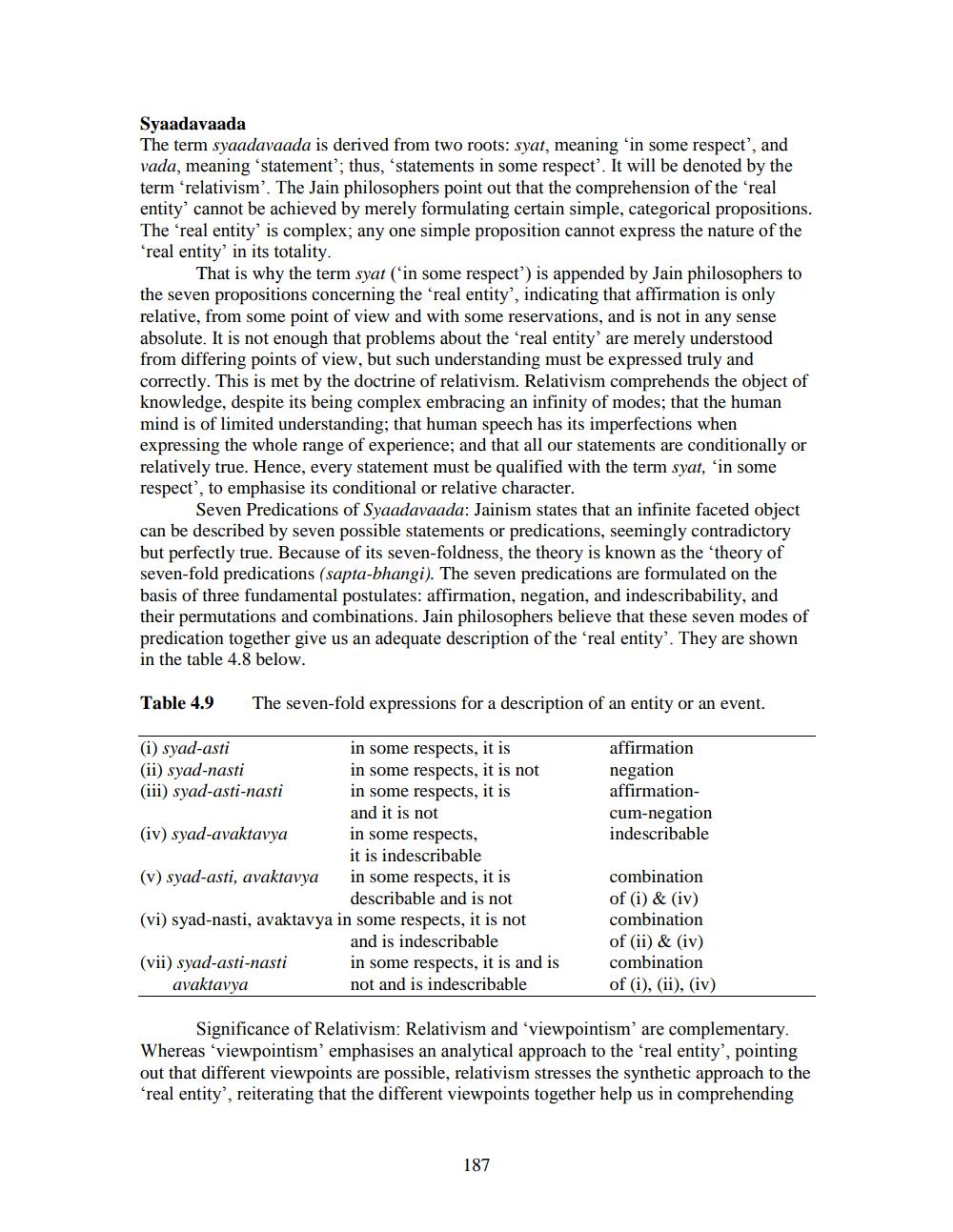________________
Syaadavaada
The term syaadavaada is derived from two roots: syat, meaning 'in some respect', and vada, meaning 'statement'; thus, 'statements in some respect'. It will be denoted by the term 'relativism'. The Jain philosophers point out that the comprehension of the 'real entity' cannot be achieved by merely formulating certain simple, categorical propositions. The 'real entity' is complex; any one simple proposition cannot express the nature of the 'real entity' in its totality.
That is why the term syat ('in some respect") is appended by Jain philosophers to the seven propositions concerning the 'real entity', indicating that affirmation is only relative, from some point of view and with some reservations, and is not in any sense absolute. It is not enough that problems about the "real entity" are merely understood from differing points of view, but such understanding must be expressed truly and correctly. This is met by the doctrine of relativism. Relativism comprehends the object of knowledge, despite its being complex embracing an infinity of modes; that the human mind is of limited understanding; that human speech has its imperfections when expressing the whole range of experience; and that all our statements are conditionally or relatively true. Hence, every statement must be qualified with the term syat, 'in some respect', to emphasise its conditional or relative character.
Seven Predications of Syaadavaada: Jainism states that an infinite faceted object can be described by seven possible statements or predications, seemingly contradictory but perfectly true. Because of its seven-foldness, the theory is known as the 'theory of seven-fold predications (sapta-bhangi). The seven predications are formulated on the basis of three fundamental postulates: affirmation, negation, and indescribability, and their permutations and combinations. Jain philosophers believe that these seven modes of predication together give us an adequate description of the 'real entity'. They are shown in the table 4.8 below.
Table 4.9
The seven-fold expressions for a description of an entity or an event.
affirmation
in some respects, it is in some respects, it is not in some respects, it is
negation
affirmation
and it is not
in some respects,
it is indescribable
(i) syad-asti (ii) syad-nasti (iii) syad-asti-nasti
(iv) syad-avaktavya
(v) syad-asti, avaktavya
in some respects, it is describable and is not
(vi) syad-nasti, avaktavya in some respects, it is not and is indescribable
in some respects, it is and is not and is indescribable
(vii) syad-asti-nasti
avaktavya
cum-negation
indescribable
187
combination of (i) & (iv) combination of (ii) & (iv) combination of (i), (ii), (iv)
Significance of Relativism: Relativism and 'viewpointism' are complementary. Whereas 'viewpointism' emphasises an analytical approach to the 'real entity', pointing out that different viewpoints are possible, relativism stresses the synthetic approach to the 'real entity', reiterating that the different viewpoints together help us in comprehending




